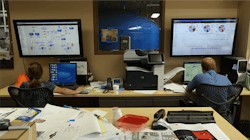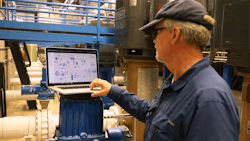Utilities Improve Flexibility & Reduce Costs With New SCADA Systems
When Park City Water in Utah needed a new system for supervisory control and data acquisition (SCADA) and human-machine interface (HMI), it picked the same solution chosen by its neighbor, Mountain Regional Water (MRW). Both utilities are located just east of Salt Lake City.
The two utilities collaborate on projects often, share some resources and even share data now that they both use Ignition by Inductive Automation, an industrial application platform with tools for building solutions in HMI, SCADA and the Industrial Internet of Things (IIoT).
Both MRW and Park City have seen significant improvements since switching from their previous SCADA systems. MRW saves more than $400,000 per year on energy with greater control from Ignition. Park City saves the equivalent of one full-time employee by using Ignition to automate its reports to a state agency.
Seeking Improvement
Prior to switching, MRW had three SCADA servers running its system from separate locations—and they were not connected, so operators could not see the entire system at once. Expansion was difficult because additional expenses would be incurred if MRW wanted to add more tags. Park City had similar issues.
System integration company SKM implemented the new software at both utilities. Based in Bountiful, Utah, SKM operates all over the western United States.
“Both utilities need to see data, track the data very closely and store large amounts of data,” said Allen Rogers, a principal and project manager for SKM. “They wanted the data to help them make better decisions, run their operations more efficiently and save energy. And both utilities are constantly expanding. I knew we needed a SCADA system that allowed for growth and could handle a lot of tags, without the need to relicense things. Ignition was a great fit for both Mountain Regional and Park City.”
Saying No to Limits
Ignition’s unlimited licensing model is suitable for the growing utilities.
“We needed a new HMI/SCADA system, primarily because the one we were using was difficult to expand,” said Doug Evans, water and energy manager for MRW. “Every time we wanted to add a site or expand our water system, we needed to acquire new licenses. We wanted a SCADA system that could provide everything we needed in one package. This is a system that can grow with us.”
The number of SCADA tags for each utility jumped sharply with the new software. MRW went from 5,000 tags to more than 90,000. Park City went from 8,000 to 130,000.
“We took them from looking through a peephole into their systems to having a nice bay window,” Rogers said.
“The granularity of our data collection with this allows us to see things in our water system that we were never able to see before,” said Nick Graue, public utilities engineer for Park City Water. “The real-time data allows us to monitor our system very closely now.”
Help All Around
Mountainous terrain requires MRW to pump plenty of water uphill. That consumes a lot of energy.
“This software allowed us to venture into new realms of energy and power management,” Evans said. “And it saved us over $400,000 a year. That savings more than funds my entire department, as well as much of our SCADA improvements and upgrades.”
For Park City, reporting has become much easier.
“I really enjoy the reporting tool that SKM built for us within Ignition,” Graue said. “I’m able to query any parameter of any tag within our entire system and learn anything about what was happening at a certain time.”
Like MRW, Park City benefits from the unlimited licensing.
“It gives us the flexibility to continuously add tags of our choosing, whether it’s new instrumentation or new reporting capabilities,” Graue said. “We are constantly modifying our SCADA system. Before, we did not have that luxury.”
Rogers said he was very impressed with the speed and power of the software when he first became familiar with it.
“I was really surprised at how fast and easy it was,” he said. “I was able to download it and install it, and within 10 minutes, I was connecting to PLCs and adding tags. It was very impressive.”


